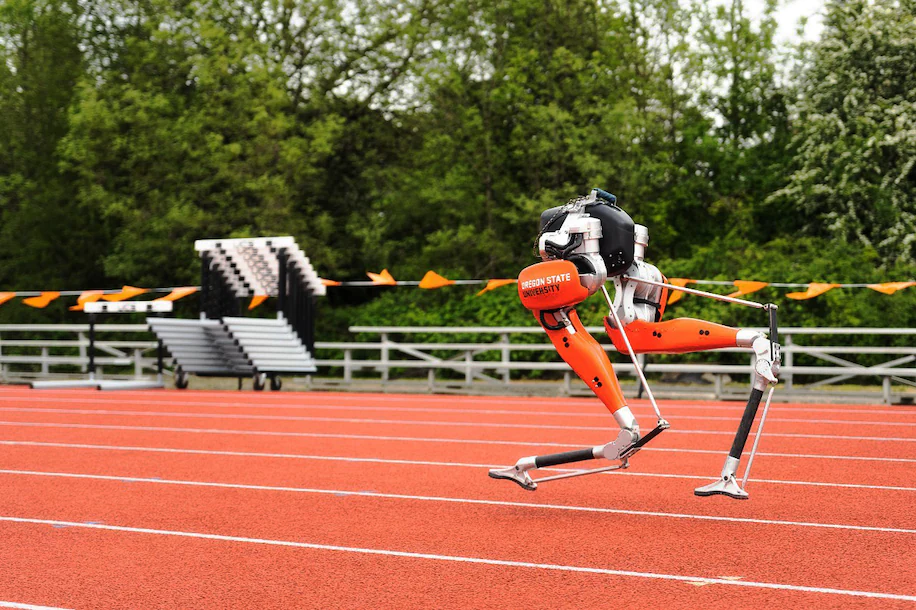
Rather than an Olympian, a robot named Cassie smashed the 100-meter dash world record on a cool May day in Oregon.
Despite a few early stumbles, the robot ultimately succeeded in achieving a world record for a bipedal robot by running 100 meters in 24.73 seconds, which is slower than Usain Bolt’s previous record of 9.58 seconds. Researchers claim the robot resembles a “ostrich without a head.”
The race was built on Cassie’s successful completion of a 5K in 2021 in about 53 minutes, which initially demonstrated Cassie could stand still for extended periods of time. Additionally, it was the culmination of almost five years of effort by engineering and machine learning researchers at Oregon State University and a spin-off business, Agility Robotics, opening the door for more sophisticated designs.
Two-legged robots have been a hot topic among engineers, scientists, and businesspeople for decades. Japanese scientists built crude bipedal machine prototypes in the 1960s. Engineers at MIT and the California Institute of Technology have attempted to do the same over the previous ten years. Elon Musk, the CEO of Tesla, unveiled Optimus, a two-legged humanoid robot, last week.
But two-legged robots have always had issues, according to academics, including losing their balance and collapsing.
The National Science Foundation and the Defense Advanced Study Projects Agency (DARPA), a covert government agency that is responsible for innovations like the internet, are funding some of the research.
Using algorithms to reward Cassie when it walks correctly, the team has been teaching her how to walk properly since 2017. All of this was motivated by Pavlovian psychology, Fern claimed. It just learns to expect these benefits and act morally.
When the team made Cassie complete a 5K in 2021, it gained some valuable insight. According to Fern, the robot was becoming “very stompy,” so researchers began praising it when it improved its walk. The researchers will now proceed to the next phase, which involves fitting Cassie with a torso and a head, after this year’s successful 100-meter dash. (Digit is one that Agility Robotics is developing.)
But these developments have their own difficulties.
To handle challenging terrain, humanoid robots with heads supported by Cassie’s leg design will need the peripheral vision. Now Cassie needs to scan around the environment, comprehend what items are there, and avoid running into them, he said.
Most importantly, these robots need to walk deliberately. Fern explained that sometimes in the real world, it is necessary to pay attention to your footing.
To replace humans with robots, however, will be a difficult task, according to engineering experts.
Cooke asserts that they lack extraordinarily sophisticated intellect. They still lack a thorough grasp of humans that is necessary for effective communication.
While it is commendable that robots like Cassie are advancing the area of robotics, Cooke continued, it seems wasteful to develop tools that only copy human behavior. She said that it could be better to create robots that can carry out activities that humans cannot.

















Comments